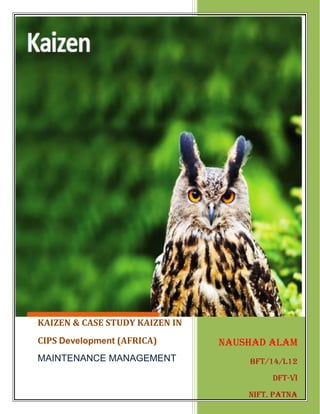Kaizen is a Japanese philosophy of continuous improvement involving everyone in an organization. It is based on the principles of eliminating waste, improving efficiency and quality, and standardizing processes. The document provides details on the key aspects of Kaizen, including its focus on small, incremental changes through techniques like 5S and PDCA cycles. It also discusses the three pillars of Kaizen - housekeeping, waste elimination, and standardization - and explains how successful implementation requires a permanent commitment to Kaizen principles at all levels of an organization.

















![17
References
Japan Productivity Center. (1990).
transfer concept and practice].
Prokopenko, J. (1987). Productivity management: A practical handbook. International Labour
Organization.
Geneva.
and Productivity (IBQP-PR). JICA Brazil Office.
JICA & Unico International Corporation. (2009).
http://lifehacker.com/207029/practice-your-personal-kaizen
The Kaizen Institute, founded by Masaaki Imai, the “lean guru” http://www.uk.kaizen.com/
Kaizen definition and overview by World Class manufacturing http://world-class-
manufacturing.com/Kaizen/kaizen.html
The Benefits Resulting From Kaizen http://www.graphicproducts.com/tutorials/kaizen/kaizen-
benefits.php](https://image.slidesharecdn.com/kaizenmentanince-160312075805/85/Kaizen-18-320.jpg)